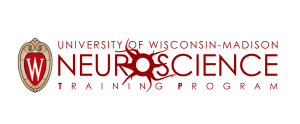Memorial Union
800 Langdon St.
Memorial Union National Pan-Hellenic Council Room (2nd Floor)
Presentations
1:30 pm Ken Paller, Northwestern University – “Memories fade but the scars still linger: The conscious and unconscious side of memory and sleep”
2:00 Kari Hoffman, Vanderbilt University – “Come together, right now: Orchestrating neural synchrony during learning”
2:30 Joel Voss, University of Chicago – “Gimme Gimme Shock Treatment: Brain Stimulation to Manipulate Episodic Memory Networks”
3:00 coffee break
3:30 Charan Ranganath, University of California, Davis – “Another Brick in the Wall: The role of event boundaries in structuring cortico-hippocampal interactions”
4:00 Thilo Womelsdorf, Vanderbilt University – “Even Flow – Reducing Uncertainty through Adaptive Reinforcement Learning in Cingulate-Striatal Routing States”
4:30 Earl Miller, MIT – “Good Vibrations: Cognition Resonates Like Bass Guitar Strings”
Sponsored by:
![]()


A block of rooms has been reserved at the Park Hotel, 22 S. Carroll St.
Abstracts
Kari Hoffman, Vanderbilt University – “Come together, right now: orchestrating neural synchrony during learning”
Cell assemblies—coordinated patterns of firing across neuronal ensembles—are thought to encode aspects of experience during learning and ground memory retrieval. I will describe how such assemblies emerge in macaques as they flexibly learn object sequences in an immersive, naturalistic environment. I will also show how these patterns organize during sleep and evolve over time. Assemblies occur during brain states that may reflect a readiness for long-range coordination and modification. Together, these features offer insight into the neural basis of cognitive flexibility and generalization in primates, including humans.
Charan Ranganath, University of California, Davis – “Another Brick in the Wall: The role of event boundaries in structuring cortico-hippocampal interactions”
Neuroscience research on memory has been predicated on the implicit assumption that the brain is always engaging in memory encoding and retrieval (or always reading out from a cognitive map). Recent research has upended this view, suggesting that cortico-hippocampal interactions that support memory encoding and retrieval are gated, such that episodic memories are formed and retrieved primarily at event boundaries, which correspond to moments of prediction error, uncertainty, or motivational significance. Based on this work, I will present a model of how dynamics in cortico-hippocampal interactions during predictable moments and event boundaries support the formation, construction, and updating of episodic memories.
Thilo Womelsdorf, Vanderbilt University – “Even Flow – Reducing Uncertainty through Adaptive Reinforcement Learning in Cingulate-Striatal Routing States”
Anterior cingulate cortex (ACC) neurons engage in synchonized routing states with the prefrontal cortex and striatum when ongoing attentional strategies are suboptimal and need adjustment. This talk surveys how these routing states emerge, how they relate to cell-type specific gating processes and how they casually affect behavior. The results support an adaptive reinforcement learning framework in which the ACC forms memories of recent prediction errors and uses this information to direct exploratory gaze, attention, and choices towards sources of uncertainty. The output of the ACC engages neuronal ensembles in the striatum to positively reinforce rewarded choices and filter out irrelevant information – effectively enabling Even Flow in an uncertain world.
Earl Miller, MIT – “Good Vibrations: Cognition Resonates Like Bass Guitar Strings”
Classic models likened brain function to neuron networks, like telegraph systems. Emerging evidence, however, suggests higher cognition relies on lower-frequency rhythmic oscillations or “brain waves” at the electric field level. This expands functionality, with “telegraph wires” also producing “radio waves” (electric fields) that rapidly spread influence. These fields can facilitate large-scale organization, enabling executive control. They can even allow (very) energy-efficient analog computation.

